FAX Option Type 2045
Operating Instructions
Facsimile Reference
<Advanced Features>
1Transmission Mode
2Checking and Canceling Transmission Files
3Communication Information
4Other Transmission Features
5Reception Features
6LAN-Fax Features
7Simplifying the Operation
8Facsimile Features
9Key Operator Setting
10Solving Operation Problems
11Appendix
For safe and correct use of this machine, please be sure to read the Safety Information in the General Settings Guide before you use it.
Introduction
This manual describes detailed instructions on the operation and notes about the use of this machine. To get maximum versatility from this machine all operators are requested to read this manual carefully and follow the instructions. Please keep this manual in a handy place near the machine.
Notes
Some illustrations in this manual might be slightly different from the machine.
Certain options might not be available in some countries. For details, please contact your local dealer.
Two kinds of size notation are employed in this manual. With this machine refer to the metric version.
Important
Contents of this manual are subject to change without prior notice. In no event will the company be li- able for direct, indirect, special, incidental, or consequential damages as a result of handling or oper- ating the machine.
Trademarks
Microsoft??, Windows?? and Windows NT?? are registered trademarks of Microsoft Corporation in the United States and/or other countries.
Adobe?? and Acrobat?? are registered trademarks of Adobe Systems Incorporated.
Ethernet is a registered trademark of Xerox Corporation.
Other product names used herein are for identification purposes only and might be trademarks of their respective companies. We disclaim any and all rights in those marks.
Note
The proper names of the Windows operating systems are as follows:
???Microsoft?? Windows?? 95 operating system
???Microsoft?? Windows?? 98 operating system
???Microsoft?? Windows?? Millennium Edition (Windows Me)
???Microsoft?? Windows?? XP Professional
???Microsoft?? Windows?? XP Home Edition
???Microsoft?? Windows?? 2000 Server
???Microsoft?? Windows?? 2000 Professional
???Microsoft?? Windows NT?? Server operating system Version 4.0
???Microsoft?? Windows NT?? Workstation operating system Version 4.0
Manuals for This Machine
The following manuals describe the operational procedures of this machine. For particular functions, see the relevant parts of the manual.

 Note
Note
???Manuals provided are specific to machine type.
???Adobe Acrobat Reader is necessary to view the manuals as a PDF file.
???Two CD-ROMs are provided:
???CD-ROM 1???Operating Instructions for Printer/Scanner???
???CD-ROM 2???Scanner Driver & Document Management Utilities???
???General Settings Guide
Provides an overview of the machine.
It also describes System Settings (such as paper trays and user codes settings), Document Server functions, and troubleshooting.
???Network Guide (PDF file - CD-ROM1)
Describes procedures for configuring the machine and computers in a net- work environment.
???Copy Reference
Describes operations, functions, and troubleshooting for the machine???s copier function.
???Facsimile Reference <Basic Features>
Describes operations, functions, and troubleshooting for the machine???s fac- simile function.
???Facsimile Reference<Advanced Features>(this manual)
Describes advanced functions and settings for key operators.
???Printer Reference 1
Describes system settings and operations for the machine???s printer function.
???Printer Reference 2 (PDF file - CD-ROM1)
Describes operations, functions, and troubleshooting for the machine???s print- er function.
???Scanner Reference (PDF file - CD-ROM1)
Describes operations, functions, and troubleshooting for the machine???s scan- ner function.
???Manuals for DeskTopBinder V2 Lite
DeskTopBinder V2 Lite is a utility included on the CD-ROM labeled ???Scanner Driver & Document Management Utilities???.
???DeskTopBinder V2 Lite Setup Guide (PDF file - CD-ROM2)
Describes installation of, and the operating environment for DeskTop- Binder V2 Lite in detail. This guide can be displayed from the [Setup] dia- log box when DeskTopBinder V2 Lite is installed.
???DeskTopBinder V2 Lite Introduction Guide (PDF file - CD-ROM2) Describes operations of DeskTopBinder V2 Lite and provides an overview of its functions. This guide is added to the [Start] menu when DeskTop- Binder V2 Lite is installed.
???Auto Document Link Guide (PDF file - CD-ROM2)
Describes operations and functions of Auto Document Link installed with DeskTopBinder V2 Lite. This guide is added to the [Start] menu when DeskTopBinder V2 Lite is installed.
???Manuals for ScanRouter V2 Lite
ScanRouter V2 Lite is a utility included on the CD-ROM labeled ???Scanner Driver & Document Management Utilities???.
???ScanRouter V2 Lite Setup Guide (PDF file - CD-ROM2)
Describes installation of, settings, and the operating environment for Scan- Router V2 Lite in detail. This guide can be displayed from the [Setup] dia- log box when ScanRouter V2 Lite is installed.
???ScanRouter V2 Lite Management Guide (PDF file - CD-ROM2)
Describes delivery server management and operations, and provides an overview of ScanRouter V2 Lite functions. This guide is added to the [Start] menu when ScanRouter V2 Lite is installed.
???Other manuals
???PS3 Supplement (PDF file - CD-ROM1)
???Unix Supplement (Available from an authorized dealer, or as a PDF file on our Web site.)

How to Read This Manual
Symbols
In this manual, the following symbols are used:
R WARNING:
This symbol indicates a potentially hazardous situation that might result in death or serious injury when you misuse the machine without following the in- structions under this symbol. Be sure to read the instructions, all of which are in- cluded in ???Safety Information???, General Settings Guide.
R CAUTION:
This symbol indicates a potentially hazardous situation that might result in mi- nor or moderate injury or property damage that does not involve personal injury when you misuse the machine without following the instructions under this symbol. Be sure to read the instructions, all of which are included in ???Safety In- formation???, General Settings Guide.
* The statements above are notes for your safety.
 Important
Important
If this instruction is not followed, paper might be misfed, originals might be damaged, or data might be lost. Be sure to read this.
 Preparation
Preparation
This symbol indicates information or preparations required prior to operating.

 Note
Note
This symbol indicates precautions for operation, or actions to take after abnor- mal operation.
 Limitation
Limitation
This symbol indicates numerical limits, functions that cannot be used together, or conditions under which a particular function cannot be used.

 Reference
Reference
This symbol indicates a reference.
[ ]
Keys that appear on the machine's panel display.
[ ]
Keys and buttons that appear on the computer's display.
{}
Keys built into the machine's control panel.
1. Transmission Mode
Sending at a Specific Time (Send Later)
Using this function, you can instruct the machine to delay transmission of your fax message until a specified lat- er time. This allows you to take ad- vantage of off-peak telephone charges without having to be by the machine at the time.
If you have a non-urgent fax, select Send Later with Economy Transmis- sion when you scan it. Faxes will be queued in memory and sent during Economy Transmission Time.
 Important
Important
???After the machine has been switched off for about one hour, all fax messages stored in memory are lost. If messages are lost for this reason, a Power Failure Report is automatically printed when the operation switch is turned on. Use this report to identify lost messag- es.
 Limitation
Limitation
???This function is unavailable with Immediate Transmission. Use Memory Transmission.

 Note
Note
???You can specify a time within 24 hours.
???If the current time shown is not correct, change it. See the General Settings Guide.
???For convenience, you can program the time when your phone charges become cheaper as the Economy Transmission Time. See p.131 ???Program Economy Time???.
???You can program one of the Quick Operation keys with operations for this function. Using the key allows you to omit steps B and C.
A Place the original, and then select the scan settings you require.

 Reference
Reference
p.11 ???Placing Originals???, Fac- simile Reference <Basic Features>
p.27 ???Scan Settings???, Facsimile
Reference <Basic Features>
B Press [Transmission Mode].
C Select [Send Later].
Transmission Mode
D Enter the time using the number keys (24 hr format), and then press [OK].
1
The specified time is shown above the highlighted [Send Later].

 Note
Note
???Press [Economy Time] to specify the economy time.
???When entering numbers small- er than 10, add a zero at the be- ginning.
???If you make a mistake, press
[Clear] or the {Clear/Stop}key be- fore pressing [OK], and then try again.
???To cancel Send Later, press [Cancel]. The display returns to that of step C.
E Press [OK].
The standby display appears.

 Note
Note
???To check the settings, press
[Transmission Mode].
F Dial and press the {Start} key.

 Note
Note
???You can cancel the transmission setup for Send Later. See p.16 ???Canceling a Transmission???.
Confidential Transmission
Confidential Transmission
If you want to limit who views your message, use this function. The mes- sage will be stored in memory at the other end and not printed until an ID is entered.
Transmitter
Receiver
Entering the Confidential ID
GFSINS0N
There are two types of Confidential Transmission:
???Default ID
It is not necessary to enter an ID when transmitting.
The other party can print the mes- sage by entering the Confidential ID programmed in their machine.
???ID Override
Should you want to send a confi- dential message to a particular per- son at the other end, you can specify the Confidential ID that the receiver has to enter to see that message. Before you send the mes- sage, do not forget to tell the re-
 Limitation
Limitation
???The destination machine must be of the same manufacturer and have the Confidential Reception function.
???The destination machine must have enough memory available.
D Depending on the Confidential Transmission type, use one of the following procedures:
1
Default ID
A Check that [Default ID] has been selected, and then press [OK].
"Default ID" is shown above the highlighted [Confidential TX].

 Note
Note
???To cancel Contidential Transmission, press [Cancel]. The display returns to that of step C.

 Note
Note
???If you make a mistake, press
[Clear] or the {Clear/Stop} key before pressing [OK], and then try again.
???To cancel Confidential Transmission, press [Cancel]. The display returns to that of step C.
E Press [OK].

 Note
Note
???To check the settings, press
[Transmission Mode].
F Dial, and then press the {Start} key.

 Note
Note
???You can cancel the transmission setup for Confidential Trans- mission. See p.16 ???Canceling a Transmission???.
Override ID
APress [ID Override].
BEnter the Confidential ID (4-dig- it number) using the number keys, and then press [OK].
"ID Override" and the entered Confidential ID are shown above the highlighted [Confiden- tial TX].

2. Checking and Canceling
Transmission Files
After you have pressed the {Start} key (after scanning originals), you can check and edit the destination or settings of Memory Transmission. You can also can- cel a transmission, change the settings of a transmission, print a stored file, print a list of stored files, and resend a file which the machine failed to transmit.
This function is available for Memory Transmission, Confidential Transmission, Transfer Request, Polling Reception, and Polling Transmission.

 Note
Note
???If there are no files being sent, received, or stored by Memory Transmission, [Change/Stop TX File] does not appear on the display.
???You cannot check or edit a file being sent or received. Also a Confidential Transmission file or stored file to be printed as a report cannot be checked or edited.
Displaying Confirmation of Transmission
B Select [Check/Change Settings].

 Note
Note
??? If multiple destinations were specified, only the destination selected first appears.
??? If multiple destinations were specified, only the number of unsent messages appears.
D Check a file, and then press [Exit].
E Press [Exit].
The standby display appears.
Checking and Canceling Transmission Files
Canceling a Transmission

 Note
Note
???If you cancel a transmission while the file is being sent, some pages of your file may have already been sent and will be received at the other end.
???If the transmission finishes while you are carrying out this proce- dure, transmission cannot be can- celed.
A Press [Change/Stop TX File].

 Note
Note
???To display only the files being sent, press [Files under TX].
???If multiple destinations were specified, only the number of unsent messages appears.
???If multiple destinations were specified, only one destination number appears. To display all destinations, press [Check/Change Settings].
C Press [Stop Transmission].
The selected file is deleted.

 Note
Note
???To quit transmission cancel, press [Save].
???To cancel another transmission, repeat from step B.
D Press [Exit].
The standby display appears.
B Select the files whose transmis- sion you want to cancel.
Checking and Canceling Transmission Files
Adding a Destination
2
B Press [Check/Change Settings].
C Select the file to which you want to add a destination.

 Note
Note
???You can specify the destination using the number keys or soft (on-screen) keys.
???You can also program a SUB code and Sub-address by press- ing [Adv. Features].
F Press [Exit].

 Note
Note
???Repeat steps D and E, if you want to add another destina- tion.
G Press [Exit].
The standby display appears.
Changing the Transmission Time
Changing the Transmission Time
B Press [Check/Change Settings].
C Select the file for which you want to change or cancel the transmis- sion time.

 Note
Note
???If you select [Economy Time], the economy time already specified is entered. See p.130 ???General Settings/Adjustment???.
???If you press [Transmit Now], the file is transmitted immediately. However, if there is a file on standby, that file is sent first.
F Press [Exit].

 Note
Note
???Repeat from step C, if you want to change another transmission time.
G Press [Exit].
The standby display appears.
Checking and Canceling Transmission Files
Printing a File
If you want to check the contents of a file that is stored in memory and not yet sent, use this procedure to print it out.
2
 Note
Note
???Confidential Transmission files are displayed, but cannot be printed.
???You can also print files that have not been successfully transmitted.
A Press [Change/Stop TX File].
B Press [Print File].

 Note
Note
???If multiple destinations were specified, only the number of unsent messages appears.
???If you want two-sided printing (optional), press [Print 2 Sides].
???To cancel printing, press [Can- cel]. The display returns to that of step C.
D Press the {Start} key.

 Note
Note
???To cancel printing after pressing the {Start} key, press [Stop Print- ing]. The display returns to that of step C.
E Press [Exit].
The standby display appears.

 Note
Note
??? Repeat from step C, if you want to print another file.
C Select the file you want to print.
Checking and Canceling Transmission Files
Printing a List of Files in Memory (Print TX File List)
Print this list if you want to find out which files are stored in memory and what their file numbers are. Knowing
2 the file number can be useful (for ex- ample when erasing files).

 Note
Note
???The contents of a file stored in memory can also be printed. See p.20 ???Printing a File???.
A Press [Change/Stop TX File].
B Press [Print List].

 Note
Note
???To cancel printing after pressing the {Start} key, press [Cancel]. The display returns to that of step B.
C Press the {Start} key.

 Note
Note
???To cancel printing after pressing the {Start} key, press [Stop Print- ing]. The display returns to that of step B.
D Press [Exit].
The standby display appears.
3. Communication Information
Printing the Journal
The Journal contains information about the last 50 communications (maximum) made by your machine. It is printed automatically after every 50 communications (receptions & trans- missions).
You can also print a copy of the Jour- nal at any time by following the pro- cedure below.
If the machine is installed with the optional extra G3 interface unit, you can print the Journal of each line type.
 Important
Important
???The contents of a Journal printed automatically are deleted after printing. Keep the journal if you require a record of transmissions and receptions. You can check a to- tal of 200 communications (recep- tions & transmissions) on the display.
???All
Prints the results of communica- tions in the order made.
???Print per File No.

 Note
Note
???The setting on the machine can be changed so that user codes will be printed instead of user names. For more information, contact your service representative.
???The sender name column of the Journal is useful when you need to program a special sender. See p.152 ???Special Senders to Treat Differently???.
???You can set whether the Journal is automatically printed after every 50 communications in User Param- eters. See p.147 ???Changing the User Parameters??? (switch 03, bit 7).
???You can set whether you print the Journal by line type. See p.147 ???Changing the User Parameters??? (switch 19, bit 1).
???You can program one of the Quick Operation keys with operations for this function. Using the key allows you to omit steps A and B.
A Press [Information].
Communication Information
C Select a printing mode.Selecting [Print per User Code]
A Press [Print per User Code].
B Specify an 8-digit user code us- ing the number keys, and then press [#].
3
Selecting [All]
A Press [All].
Selecting [Print per File No.]
APress [Print per File No.].
BEnter a 4-digit file number.

 Note
Note
???If you make a mistake, press
[Clear] or the {Clear/Stop} key, and then try again.

 Note
Note
???If you make a mistake, press
[Clear] or the {Clear/Stop} key before pressing [#], and then try again.
C Check the user name shown on the display.
D Press the {Start} key.

 Note
Note
???To cancel a file printing, press [Stop Printing]. The display re- turns to that of step B.
E Press [Exit] twice.
The standby display appears.
Communication Information
7. Communication time
Shows time taken for transmissions or re- ceptions.
8. Number of pages
Shows the number of pages transmitted or received.
9. Communication result
Shows the result of transmissions or re- ceptions.
OK: All pages were properly transmitted 3 or received.
Error: A communication error occurred.
???: Power was disconnected during communication. Not all fax messages were transmitted.
10. User name
Shows the user name registered for user code use restriction or User Transmis- sion.
11. File number
Shows file management numbers.
Checking the Transmission Result (TX File Status)
Checking the Transmission Result (TX File
Status)
You can browse a part of the Trans- mission Result Report on the display.

 Note
Note

 Note
Note
??? ???Destination??? shows the Own Fax Number or Fax Header in- formation of a receiver. For a transmission from a computer,
???-- LAN-Fax -->??? is shown.
D Press [Exit] twice.
The standby display appears.
B Select [TX File Status].
C Check the transmission results.
Transmission results are dis- played, from the latest result down, in groups of six.
Communication Information
Checking the Reception Result (RX File
Status)
You can browse a part of the Recep- tion Result Report on the display.

 Note
Note
??? Only the reception result of the last 200 communications (receptions &

 Note
Note
???Transmission Station shows the fax number of a sender or Fax Header information.
D Press [Exit] twice.
The standby display appears.
B Select [RX File Status].
C Check the reception results.
Reception results are displayed from the latest result in groups of six.
Displaying the Memory Status
Displaying the Memory Status
Use this function to display a summa- ry of current memory usage. Items shown are the percentage of free memory space, the number of re- ceived confidential messages, the number of files to be sent, the number of Memory Lock files and the number
??? When sending to the Person- al Box. See p.36 ???Personal Boxes???.
??? If you have made the machine save received messages on the hard disk, see "RX Print Stand- by File" on the display to check
of received messages to be printed.
A Press [Information].
B Press [Memory Status].
C Check the memory status.

 Note
Note
??????Others??? will be displayed:
???When storing attachment files. See p.138 ???Storing, Changing, and Deleting an Auto Document???.
???When storing Transfer Re- quest files. See p.48 ???Transfer Request???.
???When storing originals in the Information Boxes. See p.38 ???Information Boxes???.
D Press [Exit] twice.
The standby display appears.
Communication Information
Printing/Deleting Received and Stored
Documents (Printing Stored RX File)
The optional printer/scanner unit or network board is required. When the network board is used, the optional SDRAM 128 MB is also required.
You can print documents that are re- ceived and stored on the hard disk. You can also delete unwanted docu-
3 ments.
 Preparation
Preparation
Make a setting for received and stored documents before using this function. See p.172 ???Storing or Printing Received Documents???.

 Note
Note
???You can view and/or print re- ceived and stored documents us- ing a Web browser. See p.109 ???Viewing Fax Information Using a Web Browser???.
Printing Received and Stored
Documents
Use the following procedure to print documents saved on the hard disk.

 Note
Note
???This function allows you to print only received and stored docu- ments.
???Received documents cannot be used for the Document Server function.
???You can specify and print multiple documents. You can specify a max- imum of 30 documents at one time.
A Press [Information].
B Press [Print Stored RX File].
C Select the document to be printed, and then press [Print].
Printing/Deleting Received and Stored Documents (Printing Stored RX File)
D Select the printing mode, and then press the {Start} key.

 Note
Note
???To cancel printing, press [Can- cel]. The display returns to that of step C.
???To delete the document after printing, press [Delete File after Printing].
???To perform 2-sided printing (optional duplex unit required), press [Print on 2 sides] before pressing the {Start} key.
E Press [Exit] twice.
The standby display appears.
Deleting Received and Stored
Documents
Use the following procedure to delete documents stored on the hard disk.

 Note
Note
???You cannot delete a document while another person is viewing or printing it using a Web browser.
A Press [Information].3
B Press [Print Stored RX File].
C Select the document to be deleted, and then press [Delete].
D Press [Yes].

 Note
Note
???To cancel a deletion, press [No]. The display returns to that of step C.
E Press [Exit] twice.
The standby display appears.
Communication Information
Printing a Confidential Message
This function is designed to prevent unauthorized users from reading your messages. If someone sends you a message using Confidential Trans- mission, it is stored in memory but not automatically printed. To print the message you have to enter the Confidential ID Code. When your
3 machine has received a confidential message, the Confidential File (i) indicator lights.
 Preparation
Preparation
Before using this function, pro- gram your Confidential ID. See p.170 ???Programming a Confiden- tial ID???.
 Important
Important
???If the main power switch is off more than one hour, all confiden- tial messages are deleted. When this happens, use the Power Fail- ure Report to identify which mes- sages have been deleted. See p.175 ???Power Failure Report???.
 Limitation
Limitation
???You must program the Confiden- tial ID for Confidential Reception to work.

 Note
Note
???You can program one of the Quick Operation keys with operations for this function. Using the key allows you to omit steps B and C.
A Confirm that the Confidential File indicator is lit.
ZHPS061E
B Press [Information].
C Select [Print Confidential RX File].

 Note
Note
???If no confidential messages have been received, the mes- sage ???No reception file.??? is shown. Press [Exit].
D Enter a 4-digit Confidential ID using the number keys, and then press the {Start} key.
Printing a Confidential Message

 Note
Note
???You must enter the Confidential ID programmed in this ma- chine, if the received file has no Confidential ID.
???You must enter the Confidential ID programmed by the sender. Confirm the sender's Confiden- tial ID in advance.
???If the Confidential IDs or Per- sonal Confidential IDs do not match, the message ???No recep- tion file under specified Confidential ID.??? appears. Press [Exit] to cancel the opera- tion, and then check the Confi- dent ial I D or Perso nal Confidential ID with the other party, and then try again.
E Press [Exit].
The standby display appears.
Confidential File Report
When this function is turned on, this report is printed whenever your ma- chine receives a confidential message.
-If you cannot print confidential files even if the Confidential File (i) indicator is lit.
The Confidential File indicator also lights if the machine received a mes- sage with a SUB code. Check the Per- sonal Boxes.

 Note
Note
???Print from the Personal Box, when a file has been sent from another party with a SUB code attached. See p.36 ???Personal Boxes???.
Communication Information
Printing a File Received with Memory Lock
This is a security function designed to prevent unauthorized users from reading your messages. If Memory Lock is switched on, all received mes- sages are stored in memory and are not automatically printed. To print the messages, you have to enter the Memory Lock ID Code. When your
3 machine has received a message with Memory Lock, the Confidential File
(i) indicator blinks.
A Confirm that the Confidential File indicator is blinking.
ZHPS061E
 Preparation
Preparation
Before using this function, pro- gram your Memory Lock ID. See p.171 ???Programming a Memory Lock ID???.
Before using this function, set Con- fidential Transmissions to On.
 Important
Important
???If the main power switch is turned off for more than an hour, all mes- sages protected by Memory Lock will be deleted. In that case, the Power Failure Report will be print- ed so you can confirm which mes- sages have been deleted. See p.175 ???Power Failure Report???.

 Note
Note
???If free memory space is low, mes- sages may not be received.
???You can also apply a Memory Lock to messages that come only from certain senders. See p.152 ???Special Senders to Treat Differently???.
???Messages received by Polling Re- ception are automatically printed even if this function is switched on.
???You can program one of the Quick Operation keys with operations for this function. Using the key allows you to omit steps B and C.
B Press [Information].
C Select [Print Memory Lock].

 Note
Note
???If no messages were received while Memory Lock was switched on, the message ???No reception file.??? is shown. Press [Exit] .
D Enter a 4-digit Memory Lock ID with the number keys, and then press the {Start} key.
Printing a File Received with Memory Lock

 Note
Note
???If the Memory Lock ID does not match, the message ???Speci- fied code does not corre- spond to programed Memory Lock ID.??? appears. Press [Exit] and retry after checking the Memory Lock ID.
E Press [Exit].
Communication Information
Personal Boxes
 Preparation
Preparation
Before using this function, set the Personal Box in advance. See p.161 ???Programming/editing Personal Boxes???.
???To be able to receive messages into a Personal Box you must inform the sender of the SUB code regis- tered for that Personal Box and ask them to send the message using SUB Code Transmission with that SUB code. See p.45 ???SUB Code???.
This function lets you set up the ma- chine so that incoming messages ad- dressed to certain users are stored in memory instead of being printed out immediately. Each user must be as- signed a SUB code (Personal Code) that has been designated as a Person- al Box beforehand. When the other party sends their message, they spec- ify the SUB code of the user to which they are sending. When the message is received, it is stored in the Personal Box with the matching SUB code. In order to print a message received into a Personal Box, you must enter the SUB code assigned to that Personal Box. This enables several individuals or departments to share a single fax machine yet be able to differentiate between messages. Furthermore, if you specify a receiver for the Personal Box, instead of being stored in memo- ry, incoming messages with this SUB code appended are forwarded direct- ly to the destination you specify.
???When messages have been re- ceived into Personal Boxes, the Confidential Reception/Memory Lock indicator lights and the Con- fidential File Report is printed. See p.33 ???Confidential File Report???.
???If a Personal Box is assigned a re- ceiver, incoming messages are transferred to that receiver with a Forwarding Mark stamped on them. See p.143 ???Forwarding???.
???If a receiver is not assigned, print these messages. See p.36 ???Printing Personal Box Messages???.
Printing Personal Box
Messages
Follow these steps to print a message that has been received into a Personal Box.

 Note
Note
???If you print a Personal Box mes- sage, it is deleted.
A Confirm that the Confidential File indicator is lit.
Communication Information
Information Boxes
 Preparation
Preparation
Before using this function, set the Information Box in advance. See p.163 ???Programming/editing In- formation Boxes???.
Use the Information Box function to set up the machine as a Fax Informa- tion service or Document Server. By scanning documents into Information Boxes, other parties can receive these messages whenever they request them.
???You can program documents for this function with ???Storing Mes- sages in Information Boxes???. See p.38 ???Storing Messages in Infor- mation Boxes??? .
???For other parties to be able to re- trieve a message programmed in an Information Box, you need to inform them of the SEP code as- signed to that Information Box.
???When an SEP Code Polling Recep- tion request is made by another party, the SEP code they specify is matched against the SEP codes programmed in that Information Boxes. If a code matches, the mes- sage stored in the Information Box is sent to the other party automati- cally.
???You can check the contents of In- formation Boxes with ???Printing In- formation Box Messages???. See p.40 ???Printing Information Box Mes- sages???.
???You can set a password for Infor- mation Boxes in advance. A pass- word can be set in ???Key Operator Setting???. See p.163 ???Program- ming/editing Information Boxes???.
Storing Messages in
Information Boxes
Follow these steps to store a message in an Information Box.

 Note
Note
???One Information Box stores one file.
???The stored file is not deleted auto- matically. If you want to delete a stored file, see p.41 ???Deleting In- formation Box Messages???.
A Press [Information].
B Select [Store/Delete/Print Information
Box File.].
Communication Information
Printing Information Box
Messages
Follow these steps to print a message stored in an Information Box.
A Press [Information].
When a password is required
A Enter the password, and then press [OK].
3
B Select [Store/Delete/Print Information
Box File.].
C Press [Print File].
D Press [Print File], and select the box that contains the stored file you want to print.

 Note
Note
???You cannot select a box that has no stored file.

 Note
Note
???If you make a mistake, press
[Clear] or the {Clear/Stop} key before pressing [OK], and then try again.
???To cancel entering a pass- word, press [Cancel]. The dis- play returns to that of step D.
E Press the {Start} key.

 Note
Note
???If you want two-sided printing (optional), press [Print 2 Sides] before pressing the {Start} key.
???To stop printing before pressing the {Start} key, press [Cancel]. The display returns to that of step D.
???To stop printing after pressing the {Start} key, press [Stop Print- ing]. The display returns to that of step D.
F Press [Exit].

 Note
Note
???Repeat from step D to print an- other stored file in the box.
G Press [Exit].
The standby display appears.
Deleting Information Box
Messages
Follow these steps to delete a file stored in an Information Box.
A Press [Information].
B Select [Store/Delete/Print Information
Box File.].
C Press [Delete File].
D Select the box that contains the stored file you want to delete.

 Note
Note
???If you make a mistake, press
[Clear] or the {Clear/Stop} key before pressing [OK], and then try again.
???To cancel entering a pass- word, press [Cancel]. The dis- play returns to that of step D.
E Press [Delete].
???To stop deleting, press [Do not Delete]. The display returns to that of step D.
F Press [Exit].

 Note
Note
???Repeat from step D to delete an- other stored file in another box.
G Press [Exit].
The standby display appears.
When a password is required
A Enter the password, and then press [OK].
Communication Information
3
4. Other Transmission Features
Handy Dialing Functions
Chain Dial
This allows you to compose a tele- phone number from various parts, some of which may be stored in Quick Dials and some of which may be entered using the number keys.

 Note
Note
???Maximum length of a telephone or fax number: 128 digits
???For Memory Transmission and Im- mediate Transmission, insert a pause between parts of a number. For On Hook Dial and Manual Di- al, no pause is needed.
(Example) 01133-1-555333
Assume that 01133 is stored in a Quick Dial key.
A Place the original, and then select the scan settings you require.
B Press the Quick Dial key that is programmed ???01133???.
C Press the {Pause/Redial} key.
D Enter {1}, {5}, {5}, {5}, {3}, {3},
{3} using the number keys.
E Press the {Start} key.
Redial
The machine stores the last 10 desti- nations dialed. If you want to send a message to a destination which you sent faxes to recently, the Redial func- tion saves you time by finding and entering the number again.
 Limitation
Limitation
???The following kinds of destina- tions are not stored:
???Quick Dials
???Group Dials
???Destinations dialed as End Re- ceivers for Transfer Request
???Forwarding terminal of the Sub- stitute Reception
???Destinations dialed using the external telephone
???Destinations dialed by Redial (regarded as already stored in memory)
???Second and later destinations broadcasted to
???Do not dial any numbers before you press the {Pause/Redial} key. If you press the {Pause/Redial}key af- ter entering numbers using the number keys, a pause will be en- tered instead.
Other Transmission Features
A Press the {Pause/Redial} key.
B Select the destination you want to redial to.
4

 Note
Note
???Now that the date and time the original was read appears as a key, select by pressing it.
Other Transmission Features
I Press [Exit].
J Press the {Start} key.

 Note
Note
???If you use Immediate Transmis- sion and the fax machine at the destination does not support the SUB Code function, a mes- sage will appear on the display to inform you of this. When this happens, press [OK] to cancel the transmission.
4 SID Code
There are times when you may want to use an ???SID??? (Sender ID) when sending confidential faxes with the SUB Code function.

 Note
Note
???The ID can be up to 20 digits long.
???You can enter numbers, *, #, and spaces to program an ID.
???You can store IDs in Destination lists and Programs. See p.113 ???Registering and Changing Key- stroke Programs???. See ???Register- ing a Fax Destination???, General Settings Guide.
???Messages you send using this function are marked ???SID??? on all reports.
SEP Code
Normally you can only use Polling Reception to receive faxes from ma- chines that have the Polling Recep- tion function and the sam e manufacturer. However, if a machine of another manufacturer supports Polling Reception, you can receive fax messages from the other party using this method instead.
You can receive messages that have the same SEP code as the SEP code you entered.

 Note
Note
???The ID can be up to 20 digits long.
???Make sure the number of digits in the ID matches the one set on the machine to which you are sending.
???You can enter numbers, *, #, and spaces to program an ID.
???You can store IDs in Destination lists and Programs. See "Register- ing a Fax Destination", General Set- tings Guide. See p.113 ???Registering and Changing Keystroke Pro- grams???.
???Messages you receive using this function are marked ???SEP??? on all reports.
A Dial the fax number using the number keys.
B Press [Adv. Features].
Other Transmission Features
Transfer Request
Transfer Request allows fax machines that have this function to automati- cally distribute incoming messages to multiple fax destinations. This func- tion helps you save costs when you send the same message to more than one place in a distant area, and saves time since many messages can be sent in a single operation.
The diagram below may make the concept clearer.
The following terminologies are used in this section:
???Requesting Party
The machine where the message originates.
???Transfer Station
The machine that forwards the in- coming message to another desti- nation.
???End Receiver
The final destination of the mes- sage or the machine to which the Transfer Station sends to.
 Preparation
Preparation
Before you can use this function, you must program the Polling ID and your own fax number. See p.170 ???Programming a Polling ID???, p.169 ???Transfer Report???.
 Limitation
Limitation
???The Transfer Stations you specify must be machines of the same manufacturer and have the Trans- fer Station function.
???You cannot use Transfer Request without programming the fax number of the Requesting Party in a Quick Dial or Speed Dial.

 Note
Note
???Polling ID's of the Requesting Par- ty (this machine) and Transfer Sta- tions must be identical.
???You can specify up to 500 Transfer Stations in a Transfer Request.
???You can have up to 30 End Receiv- ers per Transfer Station. If you specify a Transfer Station Group, the Group counts as a single re- ceiver.
???You can program one of the Quick Operation keys with operations for this function. Using the key allows you to omit steps C and D.
A Place the original, and then select any scan settings you require.

 Reference
Reference
p.11 ???Placing Originals???, Fac- simile Reference <Basic Features>
p.27 ???Scan Settings???, Facsimile
Reference <Basic Features>
B Dial a Transfer Station.

 Note
Note
???Enter the fax numbers of the Transfer Stations using either the Quick Dial or number keys.
???If you make a mistake, press the {Clear/Stop} key, and then try again.

 Reference
Reference
p.32 ???Dialing???, Facsimile Ref- erence <Basic Features>
Other Transmission Features
With Transfer Requests set in the System Settings
You can program a Quick Dial key with Transfer Station and/or End Re- ceiver using the Transfer Request function in the System Settings. See the General Settings Guide.
A Place the original down, and then select the desired settings.
p.27 ???Scan Settings???, Facsimile
Reference <Basic Features>
B Press the key programmed with Transfer Request.
-Setting Multistep Transfer
Register a Transfer Station in a Desti- nation list. When receiving a transfer request that specifies the same End Receiver as programmed in the Desti- nation list, this machine sends a trans- fer request to the programmed Transfer Station. This function allows fax messages to be transferred via multiple stations and makes fax mes- sage transfer more efficient.
You can program up to 30 End Re- ceivers per Transfer Station. For more information, contact your service rep- resentative.
Other Transmission Features
Manual Dial
The external telephone is required.
Pick up the handset of the external telephone and dial. When the line is connected and you hear a high- pitched tone, press the {Start} key to send your fax message. If, on the oth- er hand, you hear a voice at the other end, continue conversation as nor- mal.
optional extra G3 interface unit.
???The result of a transmission with Manual Dial is not mentioned in the Transmission Result Report (Immediate Transmission).
A Place the original, and then select the scan settings you require.

 Reference
Reference

 Note
Note
???If you make a mistake, replace the external telephone, and then try again from step B.
D When the line is connected and you hear a high-pitched tone, press the {Start} key to send your fax message.

 Note
Note
???If you hear a voice, tell the re- ceiver that you want to send them a fax message (ask them to switch to facsimile mode).
E Replace the handset of the exter- nal telephone.
After transmission, the standby display appears.

 Note
Note
???If you want to cancel a transmis- sion, press the {Clear/Stop} key, and then remove the originals.
The machine immediately dials the destination.
Changing the Line Port
Changing the Line Port
The optional extra G3 interface unit is required.
When the extra G3 interface unit is in- stalled, you can connect to a maxi- mum of three ports.

 Note
Note
???When you install the extra G3 in- terface unit, you can specify the line port home position from ???Gen. Settings/Adjust???. See p.130 ???Gen- eral Settings/Adjustment???.
???When sending a fax, you can select the line port if dialing with the number keys or Chain Dial.
???G3
G3 is selected after power up or when the machine is reset. If you install the extra G3 interface unit, you can select ???G3-1???, ???G3-2???,???G3- 3???, or ???G3-Auto???depending on the number of the installed unit.
???Multi-port
When the extra G3 interface unit is installed, communications can take place simultaneously through two lines at once.
The following list shows protocol combinations available for each line type.

 Note
Note
???A maximum of three communi- cations can take place simulta- neously.
???You cannot perform three Im- mediate Transmissions simulta- neously.
???If three communications are in progress, the display shows the first communication that was initiated.
Other Transmission Features
A Press [Select Line].
B Select the line you want to use.
When one optional extra G3 unit is installed.
When two optional extra G3 units are installed.

 Note
Note
???If you select ???G3 Auto???, the ma- chine will use any available line. This increases efficiency.
C Press [Exit].
The standby display appears.
Sub Transmission Mode
Sub Transmission Mode
Use to send book originals from the exposure glass. Pages are scanned in the order shown below.
 Limitation
Limitation
???Place the original on the exposure glass. You cannot use the optional Auto Document Feeder (ADF).
???Depending on paper sizes availa- ble in the destination machine, the message may be reduced when printed at the other end.

 Note
Note
???You can have bound originals scanned as left or right page first. You can set which page (left or right) the machine scans first as de- fault with the User Parameters. See p.147 ???Changing the User Parame- ters??? (switch 06, bit 6).
A Place the original on the exposure glass, and then select the scan set- tings you require.

 Reference
Reference
p.11 ???Placing Originals???, Fac- simile Reference <Basic Features>
p.27 ???Scan Settings???, Facsimile
Reference <Basic Features>

 Note
Note
???To cancel this mode, press [Can- cel]. The display returns to that of step C.
???If you select A3, the original will be sent using Image Rotation Transmission. See p.73 ???Trans- mission with Image Rotation???.
E Select [From first Page] or [From sec- ond Page], and then press [OK].
The selected original size is shown above the highlighted [Book Fax].
Other Transmission Features

 Note
Note
???Select [From first Page] to send a book original from the first page.
???Select [From second Page] if you want to send a cover letter as the first page.
F Press [OK].
G Dial, and then press the {Start} key.
page, place the originals indi- vidually, one after the other, pressing the {Start} key after each page.
???After the last original has been scanned, press [#].
???If [#] is not pressed, the ma- chine will automatically start sending the documents, 60 sec- onds after the last original has been scanned.
Two-Sided Transmission
(Double-Sided Transmission)
The optional Auto Document Feeder (ADF) is required.
Use this function to send two-sided originals.

 Note
Note
???Originals placed on the exposure glass cannot be sent.
???The front and back of the scanned original will be printed in order on separate sheets at the other end. The orientation of alternate sheets may be reversed at the other end. If you want to print the original with the same orientation at the other end, specify the ???Original Position??? and ???Page Opening Orientation???.
???This function is only available with Memory Transmission.
???This function is only available with the ADF.
???You can confirm whether both sides were properly scanned using the Stamp function. See p.66 ???Stamp???.
Other Transmission Features
Standard Message Stamp
Use this function to stamp a standard message at the top of the first original sent.
There are four types of standard mes- sages: ???Confidential???, ???Urgent???, ???Please phone???, and ???Copy to corres. section???
You can also program other messag- es.
third line of the Label Insertion is not printed. See p.70 ???Program- ming the Label Insertion???.
???When there is an image around the area where the standard message is to be stamped, that image is de- leted.
???To program a standard message, use the Program/Change/Delete Standard Message function. See p.137 ???Programming, Changing, and Deleting Standard Messages???.
A Place the originals, and the select the scan settings you require.

 Reference
Reference
p.11 ???Placing Originals???, Fac- simile Reference <Basic Features>
p.27 ???Scan Settings???, Facsimile
Reference <Basic Features>
B Press [Sub TX Mode].
C Select [Std. Message].
D Select the standard message to be stamped, and then press [OK].
The selected standard message is shown above the highlighted [Std. Message].

 Note
Note
???To cancel the selection, press [Cancel]. The display returns to that of step C.
???Programmed standard messag- es are shown in the keys.
???The machine cannot stamp mul- tiple standard messages.
E Press [OK].
F Dial, and then press the {Start} key.
Other Transmission Features

 Note
Note
???Programmed Auto Documents are shown in the keys.
???If you make a mistake, press
[Clear] or the {Clear/Stop}key be- fore pressing [OK], and then try again.
???To cancel the Auto Document, press [Cancel]. The display re- turns to that of step C.
Printing documents stored as Auto
Documents
This function is used for printing doc- uments stored as Auto Documents. This function is very convenient as it can be used for checking the contents of stored files.
A Press [Sub TX Mode].
B Select [Auto Document].
C Select an Auto Document file to be printed, and then press [Print File].

 Note
Note
???To cancel the Auto Document, press [Cancel] before pressing [Print File]. The display returns to that of step B.
D Press the {Start} key.
Once printing is completed, the display returns to that of step C.

 Note
Note
???To cancel printing, press [Can- cel]. The display returns to that of step C.
E Press [Cancel].

 Note
Note
???You can also send Auto Docu- ments. See p.59 ???Sending an Auto Document???.
F Press [OK].
The standby display appears.
Other Transmission Features
A Press [Sub TX Mode].
B Select [Select Stored File].
C Select the documents to be sent.
4

 Note
Note
???When multiple documents are selected, they are sent in the or- der of selection.
???Press [TX Order] to arrange the order of the documents to be sent.
???Press [File Name] to place the documents in alphabetical or- der.
???Press [User Name] to place the documents in order by regis- tered user name.
???Press [Date] to place the docu- ments in order of registered date.
Specifying documents from the
User Name
A Press [Search by User Name].
BSelect the user name of the reg- istered document, and then press [OK].

 Note
Note
???To search by user name, press [Non-programed Name], and then enter the user name. Partial matching is used when searching for a user name.
C Select the file name to be sent.
Specifying documents from the file name
A Press [Search by File Name].
Specifying documents from the file list
APress [UPrev.] or [T Next] to dis- play the documents to be sent.
BSelect the file name.
Other Transmission Features
Printing stored documents
Use this function to print documents stored in the Document Server.

 Note
Note
??? Only documents stored using the facsimile function can be printed.
??? You can print documents saved from the copy or the printer func- tion with the Document Server. You cannot print documents saved from the scanner function with this
???You can specify and print multiple documents. You can specify a max- imum of 30 documents at one time.
A Press [Sub TX Mode].
B Select [Select Stored File].
C Select the document to be printed.

 Note
Note
???The documents stored using the facsimile function appear on the display.
???Press [File Name] to place the documents in alphabetical or- der.
???Press [User Name] to place docu- ments in order of registered user name.
???Press [Date] to place the docu- ments in order by the pro- grammed date.
???To see details of the selected document, press [Detail]. To re- turn to the standby menu, press
[File List].
Selecting a document from file list
APress [U Prev.] or [T Next] to dis- play the document to be sent.
BSelect the file name.
Specifying a document from the
User Name
A Press [Search by User Name].
B Press the user name of the doc- ument to be sent, and then press [OK].

 Note
Note
???To search by user name, press [Non-programed Name] , and then enter the user name. User name serches us- ing partial matching.

 Reference
Reference
???Entering Text???, General Set- tings Guide
C Select the file name.
Specifying a document from the file name
A Press [Search by File Name].

 Note
Note
???Partial matching is used to search for the file name.

 Reference
Reference
???Entering Text???, General Set- tings Guide
C Select the file name.
D If you select a document with a password, enter the password, and then press [OK].
If the document does not have a password, proceed to step E.
Other Transmission Features
E Press [Print File] or [Print 1st Page].
When [Print File] is pressed, the ma- chine prints all the pages. When [Print 1st Page] is pressed, the ma- chine prints only the first page.
 Limitation
Limitation
???When [Print 1st Page] is selected, originals larger than A4 size are printed after they are reduced to A4 size.
???The machine can print up to 30
???To print both sides, press [Print 2 Sides].
F Press the {Start} key.

 Note
Note
???When only the first page is printed, the file name is printed at the top of the paper.
???To cancel printing, press [Can- cel].
G Press [Exit].

 Note
Note
???You can also send a stored doc- ument. See p.61 ???Sending stored documents???.
H Press [OK].
The standby display appears.
Stamp
The optional Auto Document Feeder (ADF) is required.
When sending a fax message using the ADF, the machine can stamp a cir- cle mark at the bottom of the original. When sending a two-sided docu- ment, the document is marked at the bottom of the front page and top of the rear page. This stamp indicates that the original has been successfully stored in memory for Memory Trans- mission, or successfully sent by Im- mediate Transmission.

 Note
Note
???Stamp only works when scanning from the ADF.
???When the stamp starts getting lighter, replace the cartridge. See p.177 ???Replacing the Stamp Car- tridge???.
???If a page was not stamped even though the Stamp function is turned on, you need to resend that page.
Other Transmission Features
Label Insertion
With this function you can have the receiver name printed on the message when it is received at the other end. The name will be printed at the top of the page and will be preceded by ???To???. You can also cause the text pro- grammed as a standard message to be printed. See p.137 ???Programming, Changing, and Deleting Standard Messages???.
ed, that image is deleted.
???You can program one of the Quick Operation keys with operations for this function.
Sender Stamp
When there is data, such as the user name and department name, pro- grammed into the user code, you can have the machine print a sender stamp on the right edge of your pa- per.

 Note
Note
???Enter the user name in System Set- tings.
Reduced Image Transmission
Using this function, your message is sent at a reduced size (93%) with a blank margin on the left.

 Note
Note
???This function is unavailable with Immediate Transmission, or speci- fied transmission of a stored docu- ment.
???Image Rotation is unavailable with this function.
Auto Reduce
When this function is turned on, if the receiver's paper is smaller than the paper you are sending on, the mes- sage is automatically reduced to fit onto the paper available at the other end.
Sub Transmission Mode
???If you turn this function off, the scale of the original is maintained and some parts of the image may be deleted when printed at the oth- er end.
C Select [Options].
D Select options to be set up.
Default ID Transmission
If you turn this function on, transmis- sion will only take place if the desti- nation's Polling ID is the same as yours. This function can stop you ac- cidentally sending information to the wrong place (you need to coordinate Polling ID's with the other party).

 Note
Note
???You can program one of the Quick Operation keys with operations for this function.
Selecting transmission options for a single transmission
A Place the original, and then select the scan settings you require.

 Reference
Reference
p.11 ???Placing Originals???, Fac- simile Reference <Basic Features>
p.27 ???Scan Settings???, Facsimile
Reference <Basic Features>
4

 Note
Note
???To close the option settings, proceed to step E.
Programming the Fax Header
Print
A Press [ON] to specify the fax header print.

 Note
Note
???Press [OFF] if you do not want to print the sender name.
Other Transmission Features
Programming the Label Insertion
A Press [Programed Name] in ???La-
bel Insertion???.

 Note
Note
???Press [OFF] if you do not want to insert a destination.

 Note
Note
???The set user name is dis- played when the user code has been stored. See the Gen- eral Settings Guide.
???You can switch titles by pressing the title keys.
???To stamp a non-registered user name, press [Non-pro- gramed Name], and then enter the user name.
???If you do not want to stamp the sender's stamp, press [No Stamp].
Programming the Reduced
Image Transmission
A Press [ON] in ???Reduced Image
TX???.

 Note
Note
???Press [OFF] if you do not want to do a reduced trans- mission.
Programming the Auto Reduce
APress [ON] in ???Auto Reduce???.

 Note
Note
???Press [OFF] if you do not want to use the Auto Reduce function.
Programming the Default ID
Transmission
APress [ON] in ???Default ID TX???.

 Note
Note
???Press [OFF] if you do not want to use ID transmission.
E Press [OK] twice.
F Set the destination, and then press the {Start} key.
More Transmission Functions
More Transmission Functions
If Memory Runs Out While
Storing an Original
If you run out of memory while stor- ing an original (free space reaches 0%), the message ???Memory is full.
Cannot scan more. Transmission will be stopped.??? is displayed.
Press [Exit] to transmit stored pages only.

 Note
Note
???In default, scanned pages are sent. To change the settings to delete scanned pages, contact your serv- ice representative.
Parallel Memory Transmission
This function dials while the original is being scanned. Standard Memory Transmission stores the original in memory, then dials the destination. Parallel Memory Transmission al- lows you to quickly determine whether a connection was made. In addition, this function scans the orig- inal faster than Immediate Transmis- sion. This is useful when you are in a hurry and need to use the original for another purpose.
 Limitation
Limitation
???Standard Memory Transmission is used instead of Parallel Memory Transmission in the following cas- es:
???When the line is busy and could not be connected to
???With Send Later
???When you store an original for Memory Transmission while another communication is in progress
???When two or more destinations are specified
???When you send only an Auto Document
???When the first page of an origi- nal is placed on the exposure
???When you send messages stored in the Document Server

 Note
Note
???You can turn this function on or off with the User Parameters. See p.147 ???Changing the User Parame- ters??? (switch 07, bit 2).
???Standard Memory Transmission may be used instead of Parallel Memory Transmission depending on the optional equipment in- stalled if there is not enough free memory left.
???If you use this function, the Memo- ry Storage Report will not be print- ed.
???If the {Clear/Stop} key is pressed, an original will jam or memory will run out during Parallel Mem- ory Transmission stops. The Trans- mission Result Report is printed and files are deleted.
???When Parallel Memory Transmis- sion is used, the total number of originals in ???Fax Header Print??? is not automatically printed.
Other Transmission Features
Checking the Transmission
Result
???Turn the Transmission Result Re- port on if you want a report to be printed after every successful transmission. See p.18 ???Memory Transmission???, Facsimile Reference <Basic Features>.
???If you leave the Transmission Re- sult Report off, the report will not
be printed after every transmis- sion. However, if a transmission 4 fails, a Communication Failure Re- port will be printed instead. See p.75 ???Communication Failure Re-
port???.
???You can also check the transmis- sion result by examining the Jour- nal . S ee p . 23 ???Printing the Journal???.
???You can either print or scroll through the Journal on the display. See p.27 ???Checking the Transmis- sion Result (TX File Status)???.
Automatic Redial
If a fax message could not be trans- mitted because the line was busy or an error occurred during transmis- sion, redialing is done five times in five minutes intervals (these figures vary according to which country you are in).
If redialing fails after four redials, the machine cancels the transmission and prints a Transmission Result Report or Communication Failure Report.
Batch Transmission
If you send a fax message by Memory Transmission and there is another fax message waiting in memory to be sent to the same destination, that message is sent along with your orig- inal. Several fax messages can be sent with a single call, thus eliminating the need for several separate calls. This helps save communication costs and reduce transmission time.
Fax messages for which the transmis- sion time has been set in advance are sent by batch transmission when that time is reached.

 Note
Note
???You can turn this function on or off with the User Parameters. See p.147 ???Changing the User Parame- ters??? (switch 14, bit 2).
???The originals to be transmitted at a specific time will be sent at that time.
???If fax memory is overloaded, mes- sages may not be sent in the order they were scanned.
ECM (Error Correction Mode)
This function automatically sends data that was not transmitted suc- cessfully using a system that complies with international standards.
ECM requires that the destination machine has the same function.

 Note
Note
???You can turn this function on or off using the Key Operator Settings. See p.146 ???ECM???.
More Transmission Functions
Broadcasting Sequence
If you dial several destinations for the same message (broadcasting), the messages are sent in the order in which they were dialed. If the fax message could not be transmitted, the machine redials that destination after the last destination specified for broadcasting. For example, if you specify four destinations, A through D, for broadcasting, and if the lines to destinations A and C are busy, the machine dials the destinations in the following order: A, B, C, D, A, and C.
Checking the Transmission
Progress
To check which destinations the fax message has been sent to so far, print the TX file list.
Transmission with Image
Rotation
Generally, place A4, 81/2"???11" origi- nals in the landscape orientation (L). If you place an A4, 81/2"???11" original in the portrait orientation (K), the image will be sent rotated by 90??. Pro- viding the receiver has A4, 81/2"???11" landscape paper (L), the message will be printed the same size as the original.
Immediate Transmission.
??? When Image Rotation is used, all messages are sent by normal Mem- ory Transmission.
??? This function is unavailable when using Mixed Original Sizes.
Dual Access
The machine can scan other messages into memory even while sending a fax message from memory, receiving a message into memory, or automati- cally printing a report. Since the ma- chine starts sending the second message immediately after the cur- rent transmission ends, the line is used efficiently.

 Note
Note
???Note that during Immediate Transmission or when in User Tools mode, the machine cannot scan an original.
Simultaneous Broadcast
The optional extra G3 interface unit is re- quired.
The Standard Broadcast function sends faxes one at a time to multiple destinations in the order of specified destination numbers.
The Simultaneous Broadcast func- tion, however, can simultaneously send faxes to three destinations using different lines.
This results in a shorter overall trans- mission time.
Other Transmission Features

 Note
Note
???This function can use a maximum of three lines simultaneously.
???When using the optional extra G3 interface unit, if you set the line se- lection as ???G3 Auto??? beforehand, the machine will use whichever G3 line is not busy. This increases effi- ciency.
JBIG Transmission
The optional fax function upgrade unit is 4 required.
If you use JBIG (Joint Bi-level Image Experts Group) compression, you can send photographic originals faster than with other methods of compres- sion. You can only use this function with G3 line type.
 Limitation
Limitation
???This function requires that the oth- er party's fax machine has both the JBIG function and ECM function (G3 communication only).

 Note
Note
???When the optional extra G3 inter- face unit is installed, JBIG recep- tions of G3-2 and G3-3 lines are standard.
???If ECM is turned off, JBIG Trans- mission is unavailable. See p.146 ???ECM???.
Other Transmission Features
Transmission Result Report
(Immediate Transmission)
If you turn this report on, a report will be printed after every Immediate Transmission so you have a record of whether the transmission was suc- cessful or not. If the machine is set up not to print this report and the fax message could not be successfully transmitted, the Error Report is print- ed instead.
4
 Note
Note
???You can switch this report on or off in the User Parameters. See p.147 ???Changing the User Parameters??? (switch 03, bit 5).
???If the page was sent successfully, the Page column gives the total number of pages sent successfully.
Reception Features
 Important
Important
??? When about one hour passes after power to the machine is turned off, all fax messages stored in memory will be lost. If any messages have been lost for this reason, a Power Failure Report is automatically printed when the operation switch is turned on. Use this report to identify lost messages.
??? The machine may not be able to re- ceive large numbers of messages or messages with high data con- tent. In such cases, we recommend you switch off the above functions or install the optional expansion
???The machine may not be able to re- ceive fax messages when free memory space is low.

 Note
Note
???If the free memory space reaches 0% during Memory Reception, the machine can no longer receive the current fax message and stops communicating.
???If you have selected [Store] for [Re- ception File Setting], received mes- sages will be saved on the hard disk and will not be printed. You can print those messages by oper- ating the machine or a connected computer, as necessary. See p.172 ???Storing or Printing Received Doc- uments???.
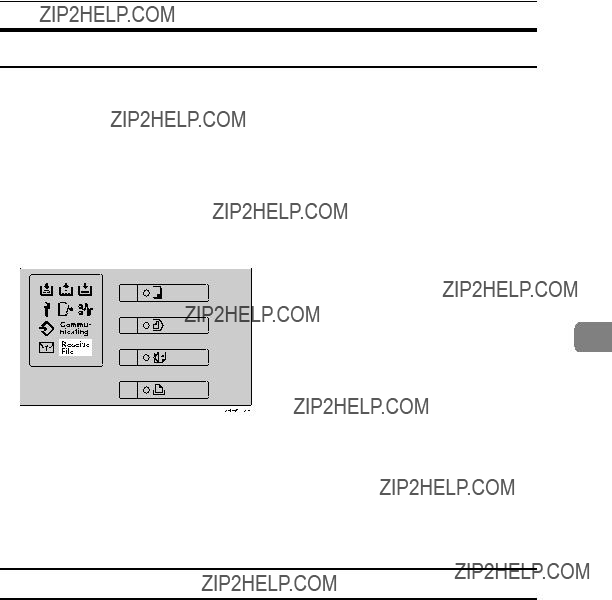
Reception
Substitute Reception
In Substitute Reception, a received fax message is stored in memory instead of being printed. Substitute Reception gets used when the machine cannot print any fax messages. Fax messages received using Substitute Reception are auto- matically printed when the condition which caused the machine to use Substi- tute Reception is rectified.
Depending on why the machine cannot print, Substitute Reception might be used for all fax messages received, or for only those messages that match a spec- ified condition.
The Receive File indicator lights to let you know when fax messages have been received using Substitute Reception.
5

 Note
Note
???Reception may not take place if there is not enough free memory.
???If free memory reaches 0% during Substitute Reception, any further reception becomes impossible and the current communication is terminated.
???When a fax message is received after [Store] has been selected for [Reception File Setting] in the Facsimile Features menu, the Receive File indicator lights.
Receiving messages unconditionally
If one of the conditions listed below occurs, the machine receives all fax messag- es using Substitute Reception.

Reception Features
Receiving messages according to parameter-specified settings
If one of the conditions listed below occurs, the machine receives only those mes- sages that match the conditions specified in the User Parameters. See p.147 ???Changing the User Parameters??? (switch 05, bit 2,1).
???When Own Name or Own Fax Number is received
The machine switches to Substitute Reception only when the sender has pro- grammed their Own Name or Own Fax Number. If the power is switched off for more than an hour, all the messages stored in memory are deleted. In that case, the Power Failure Report or the Journal can be used to identify which messages are lost so you can ask the senders to transmit them again.
 Important
Important
???If a sender has not programmed their Own Name or Own Fax Number, the machine may fail to receive an important fax message. We recommend that you ask important senders to program an Own Name or Own Fax Number in advance.
???Free
The machine switches to Substitute Reception regardless of whether or not the sender has programmed their Own Name or Own Fax Number.
???Polling ID match
The machine switches to Substitute Reception only when the programmed Polling ID of the other end matches the ID of this machine.
???Disable
The machine does not receive any messages.
Reception Functions
Auto Fax Reception Power-up
This machine can be set to shut down automatically if no one has used it for a while. In these situations, even though the operation switch is off, the machine can still receive incoming messages as long as the main power switch is on.
 Important
Important
???Reception is not possible if both the operation switch and main power switch are turned off.
ceived (Immediate Reception) with the User Parameters. See p.147 ???Changing the User Parame- ters??? (switch 14, bit 0).
???You can also have fax messages re- ceived by Memory Reception (Substitute Reception) printed af- ter the machine is turned on.
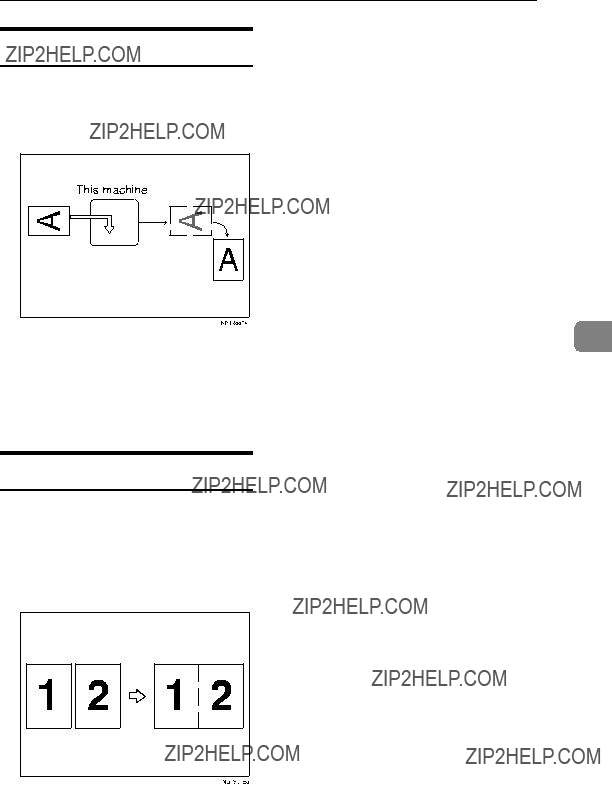
Image Rotation
If you have set paper in the standard tray K, incoming fax messages will be rotated automatically to fit onto the paper.

 Note
Note
???You can choose to have received messages printed from a specified tray. See p.132 ???Reception Set- ting???.
Combine Two Originals
When two messages of the same size and orientaion are received consecu- tively, they are printed on a single sheet when you turn this function on. This can help you economize on pa- per.
???Two B5 JISKmessages are printed side by side on a sheet of B4 JISL.
???Two A4K messages are printed side by side on a sheet of A3L.
???Two 81/2"???51/2"K messages are
printed side by side on a sheet of 81/2"???11"L.
???Two 81/2"???11"K messages are
printed side by side on a sheet of 11"???17"L.
 Limitation
Limitation
???This function does not work with
messages larger than A5K, B5
JISK, A4K, 81/2" ??? 11"K or 81/2" ??? 51/2"K. When A5K, B5 JISK,
A4K, 81/2" ??? 11"K or 81/2" ???
51/2"K size paper is loaded in the 5 machine, each page of the received message is printed on a single
sheet.
???If paper matching the size and ori- entation of a received document is unavailable, ???Combine two origi- nals??? is not possible.
???When Combine two originals and 2-Sided Printing are selected at the same time, Combine two originals takes priority and 2-Sided Printing is canceled.

 Note
Note
???You can turn this function on or off with the User Parameters. See p.147 ???Changing the User Parame- ters??? (switch 10, bit 1).
???This function uses Memory Recep- tion.
???Two A5K messages are printed side by side on a sheet of A4L.
??? If the specified paper size and the size of paper set in the bypass tray do not match, paper jams may oc- cur, or the image may be truncat- ed.
??? If messages are printed on paper smaller than A4, the image may be truncated, or split across sheets.
??? If you use this function, Image Ro- tation and 180-Degree Rotating Printing are not possible.
Where Incoming Message are Delivered - Output Tray
Where Incoming Message are Delivered - Output Tray
Specifying Tray for Lines
The optional extra G3 interface unit is re- quired.

 Note
Note
???To use this function, specify the port and destination using [Specify Tray for Lines]. See p.132 ???Reception Setting???.
Tray Shift
The optional finisher or shift sort tray unit is required.
When the optional finisher unit is se- lected for fax output, you can use the Tray Shift function whenever a fax or report is printed.
This is useful for separating faxes stacked in the finisher output tray. For example, if the previous incoming fax was output to the left, the next in- coming fax will be output to the right and vice-versa.

 Note
Note
???You can turn this function on or off with the User Parameters. See p.147 ???Changing the User Parame- ters??? (switch 19, bit 0).
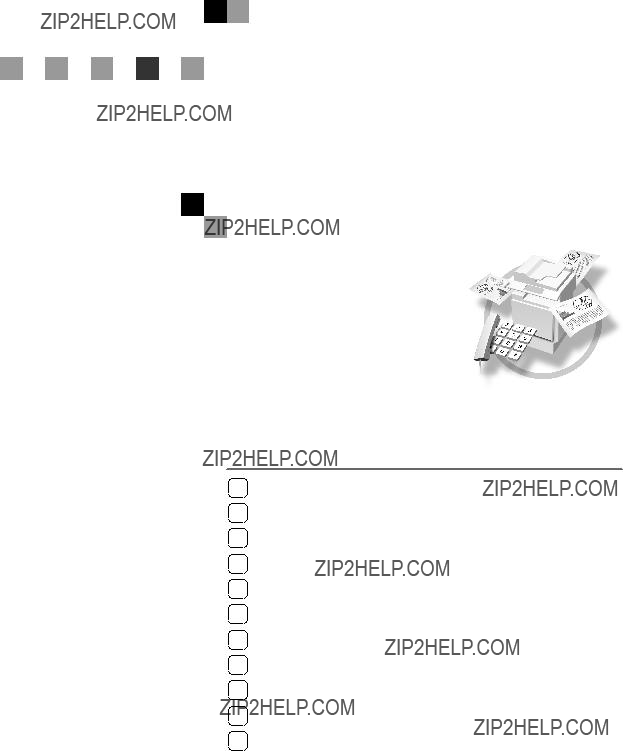
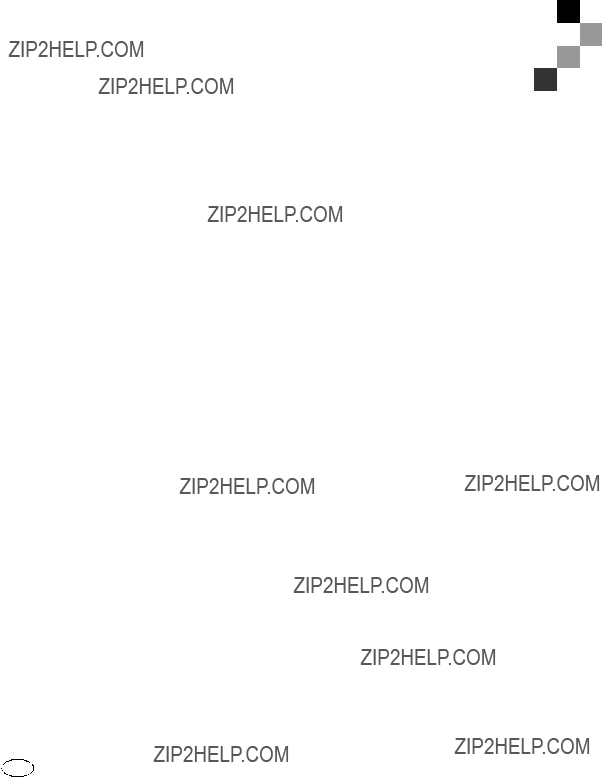


 Note
Note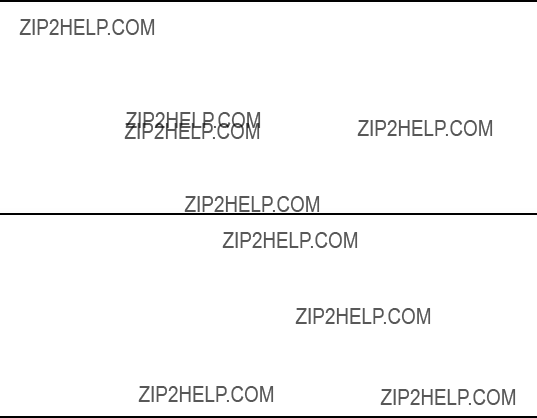






 Important
Important Preparation
Preparation
 Note
Note Limitation
Limitation
 Reference
Reference
 Important
Important Limitation
Limitation
 Note
Note
 Reference
Reference

 Note
Note
 Note
Note
 Note
Note

 Note
Note
 Reference
Reference
 Note
Note
 Note
Note
 Note
Note
 Limitation
Limitation
 Note
Note
 Reference
Reference
 Note
Note
 Note
Note

 Reference
Reference Limitation
Limitation

 Note
Note
 Note
Note
 Note
Note
 Note
Note
 Limitation
Limitation
 Note
Note

 Reference
Reference
 Note
Note
 Note
Note

 Note
Note
 Note
Note Limitation
Limitation
 Note
Note
 Limitation
Limitation
 Note
Note

 Note
Note
 Note
Note
 Note
Note


 Note
Note
 Note
Note

 Note
Note
 Note
Note
 Note
Note

 Note
Note
 Note
Note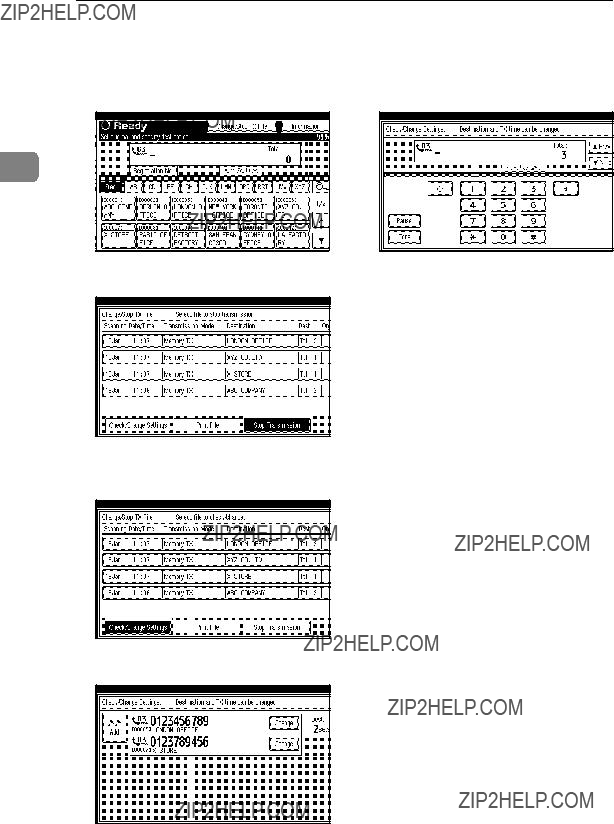

 Note
Note
 Note
Note

 Note
Note
 Note
Note

 Note
Note
 Note
Note
 Note
Note
 Note
Note
 Preparation
Preparation
 Note
Note
 Note
Note
 Note
Note

 Note
Note
 Note
Note
 Note
Note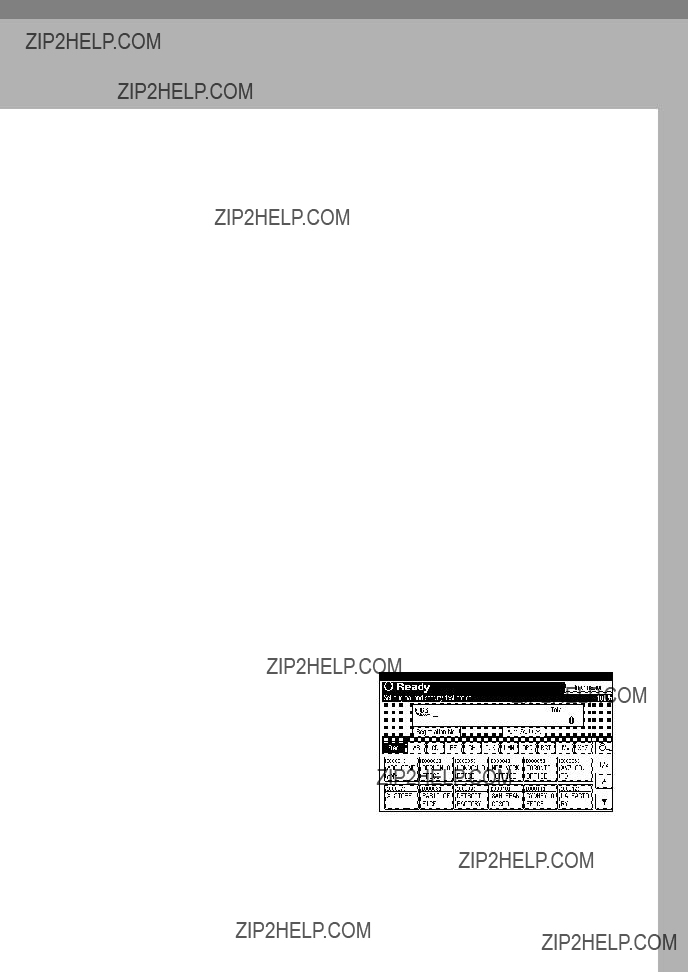
 Important
Important
 Note
Note

 Note
Note
 Note
Note
 Note
Note



 Note
Note
 Note
Note

 Note
Note
 Note
Note

 Note
Note
 Preparation
Preparation
 Note
Note
 Note
Note

 Note
Note
 Note
Note
 Note
Note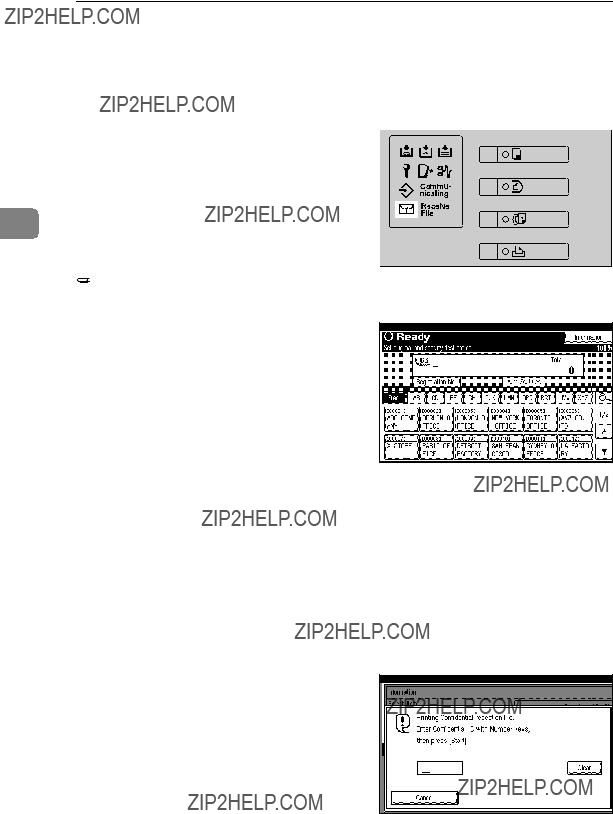
 Preparation
Preparation Important
Important Limitation
Limitation
 Note
Note
 Note
Note

 Note
Note
 Note
Note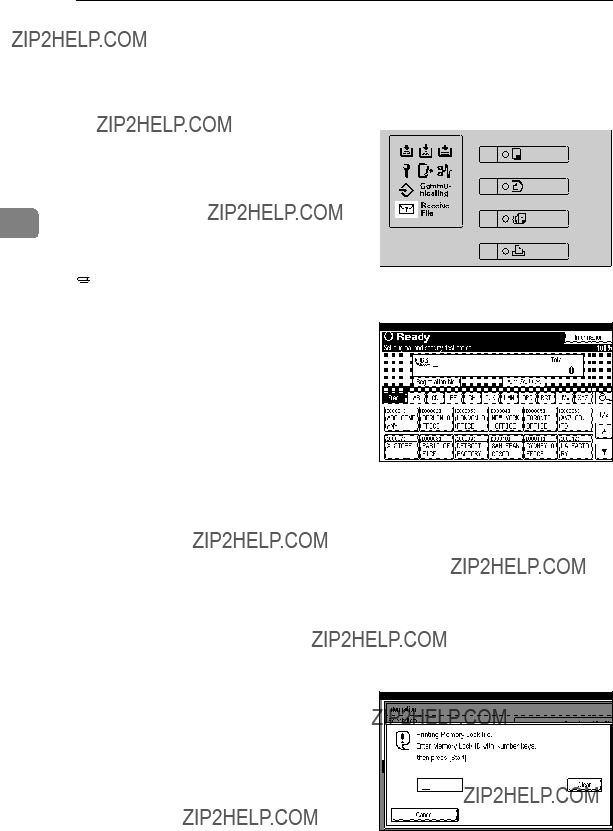
 Preparation
Preparation Important
Important
 Note
Note
 Note
Note

 Note
Note
 Preparation
Preparation
 Note
Note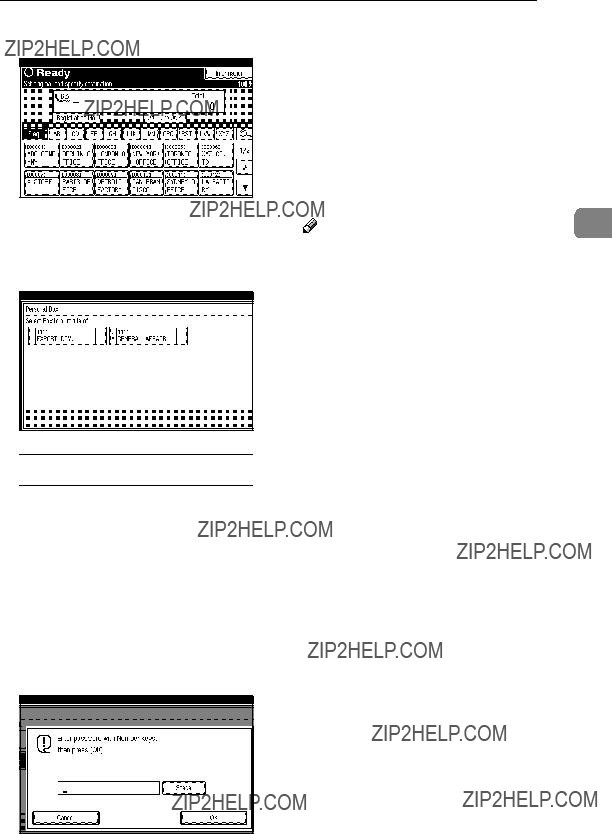

 Note
Note
 Note
Note
 Note
Note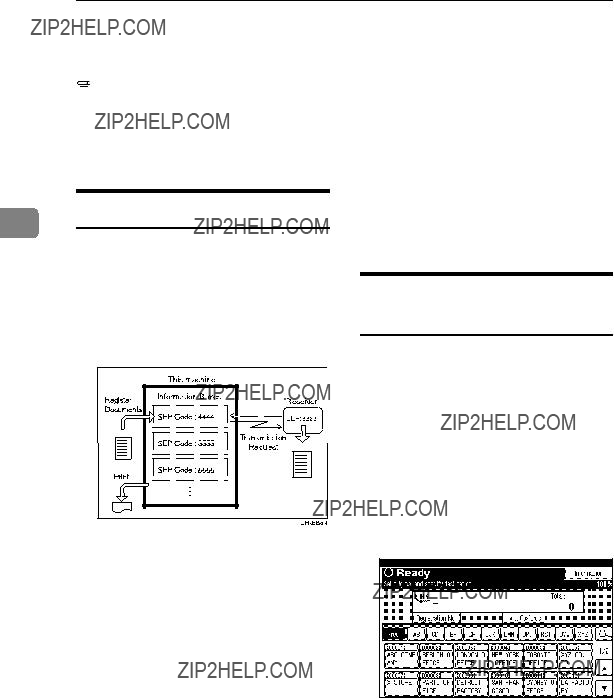
 Preparation
Preparation
 Note
Note

 Note
Note
 Note
Note
 Note
Note
 Reference
Reference
 Note
Note

 Note
Note
 Note
Note
 Note
Note
 Note
Note

 Note
Note
 Note
Note


 Note
Note Limitation
Limitation

 Note
Note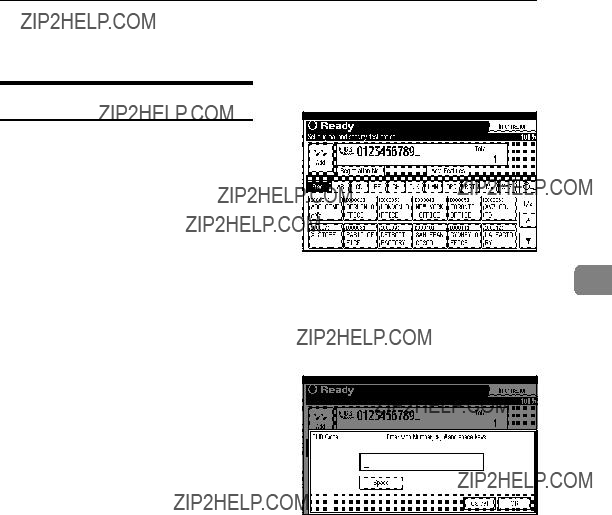

 Note
Note
 Note
Note

 Note
Note
 Note
Note
 Note
Note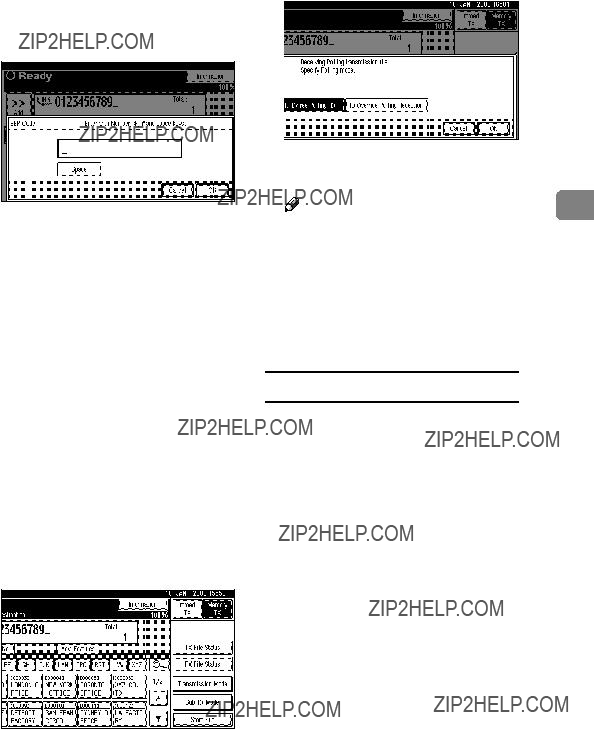

 Note
Note
 Note
Note
 Preparation
Preparation Limitation
Limitation
 Note
Note
 Reference
Reference
 Note
Note
 Reference
Reference

 Note
Note
 Note
Note

 Limitation
Limitation
 Note
Note
 Reference
Reference
 Note
Note
 Note
Note
 Note
Note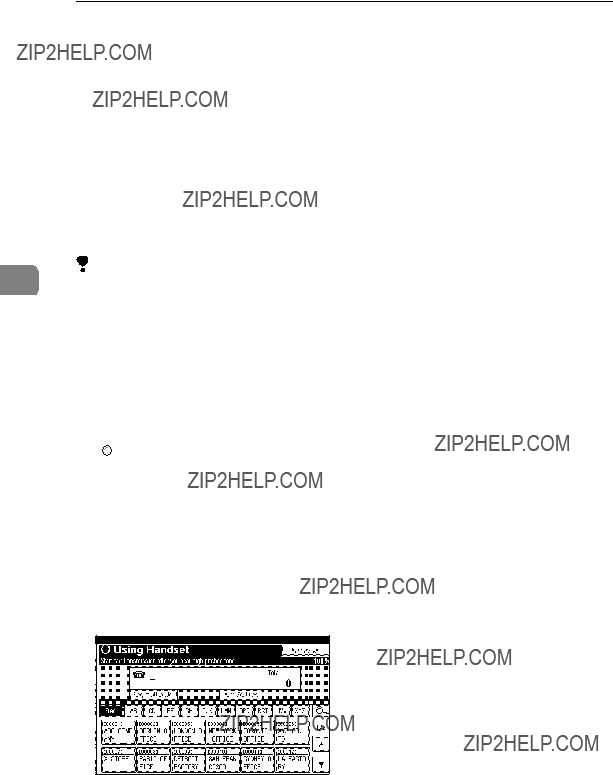

 Reference
Reference
 Note
Note
 Note
Note
 Note
Note

 Note
Note
 Note
Note

 Note
Note
 Limitation
Limitation
 Note
Note
 Reference
Reference
 Note
Note

 Note
Note
 Note
Note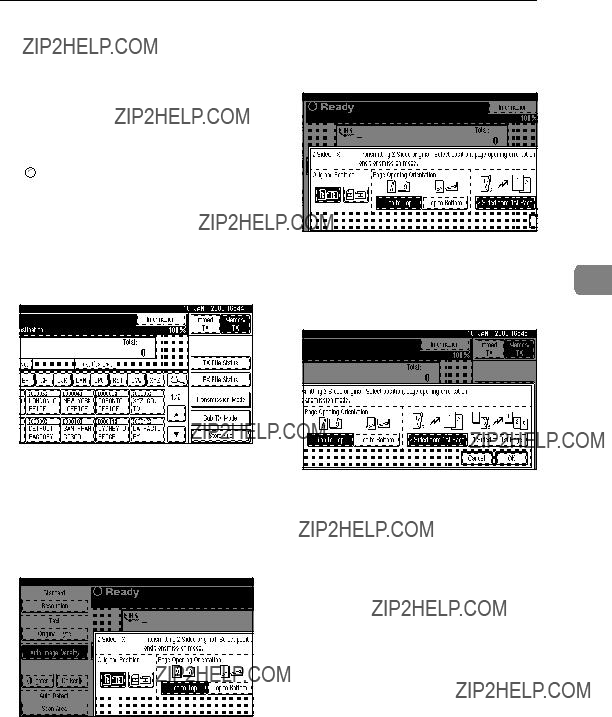

 Reference
Reference or
or  .
.
 Note
Note
 Note
Note

 Reference
Reference
 Note
Note
 Preparation
Preparation
 Note
Note
 Reference
Reference
 Note
Note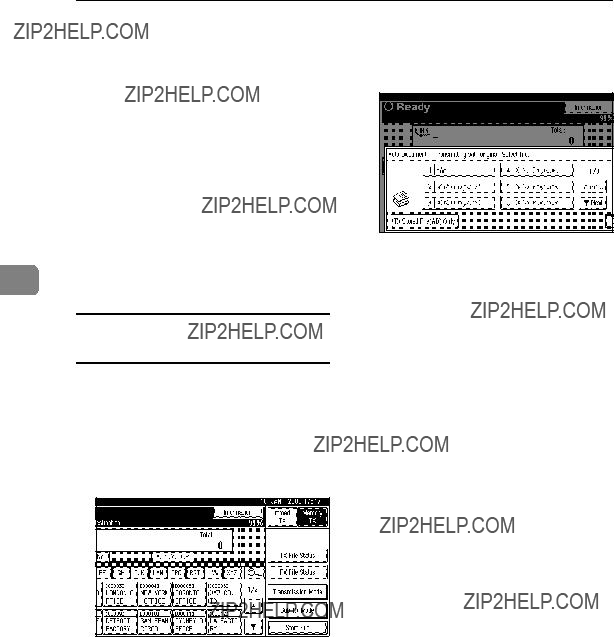

 Note
Note
 Note
Note
 Note
Note
 Note
Note
 Preparation
Preparation
 Note
Note
 Note
Note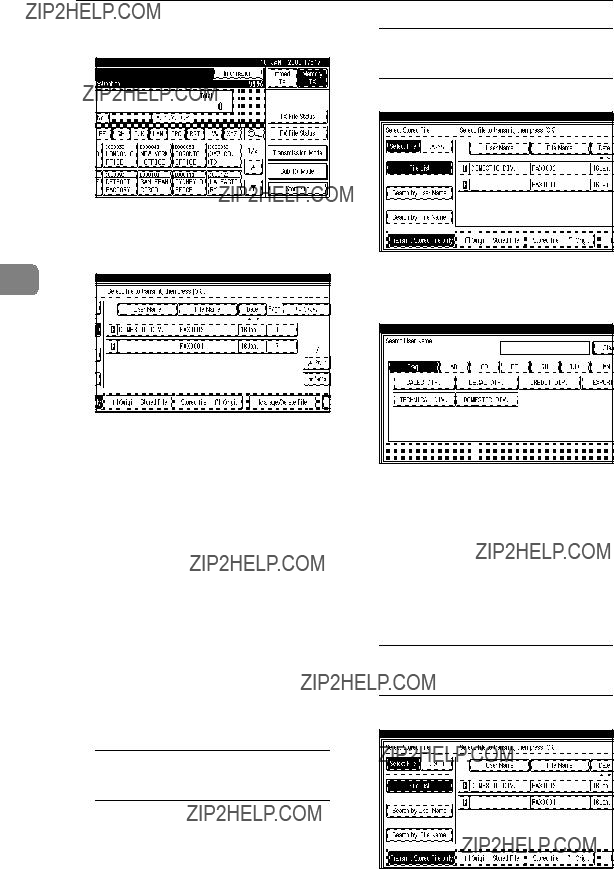

 Note
Note
 Note
Note

 Note
Note
 Note
Note
 Note
Note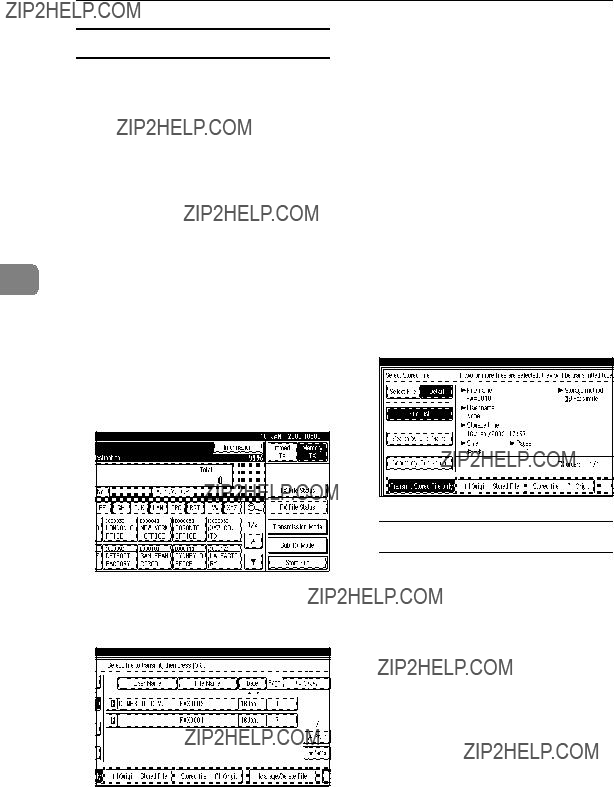

 Note
Note
 Note
Note

 Note
Note
 Reference
Reference
 Note
Note
 Reference
Reference
 Limitation
Limitation
 Note
Note
 Note
Note
 Note
Note

 Reference
Reference
 Note
Note
 Note
Note

 Note
Note
 Note
Note

 Note
Note
 Reference
Reference
 Note
Note
 Note
Note

 Note
Note
 Note
Note
 Note
Note
 Note
Note
 Note
Note

 Note
Note Limitation
Limitation
 Note
Note

 Note
Note
 Note
Note

 Note
Note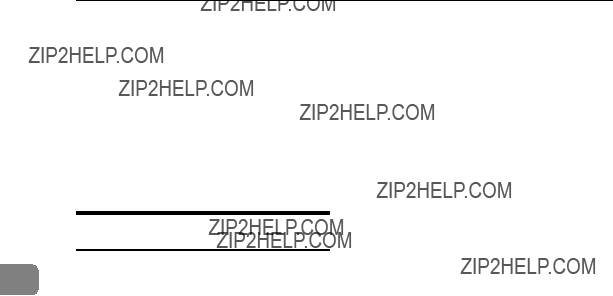

 Note
Note Limitation
Limitation
 Note
Note

 Note
Note
 Note
Note
 Note
Note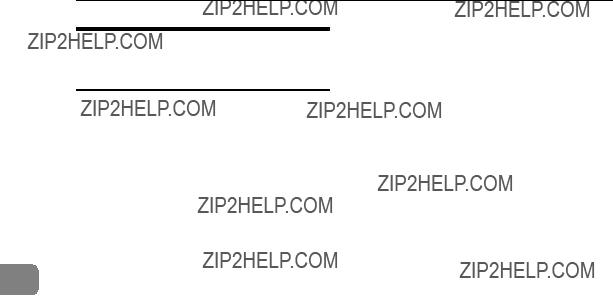

 Note
Note

 Note
Note
 Important
Important
 Note
Note

 Note
Note
 Important
Important
 Limitation
Limitation
 Preparation
Preparation
 Note
Note Limitation
Limitation
 Note
Note
 Important
Important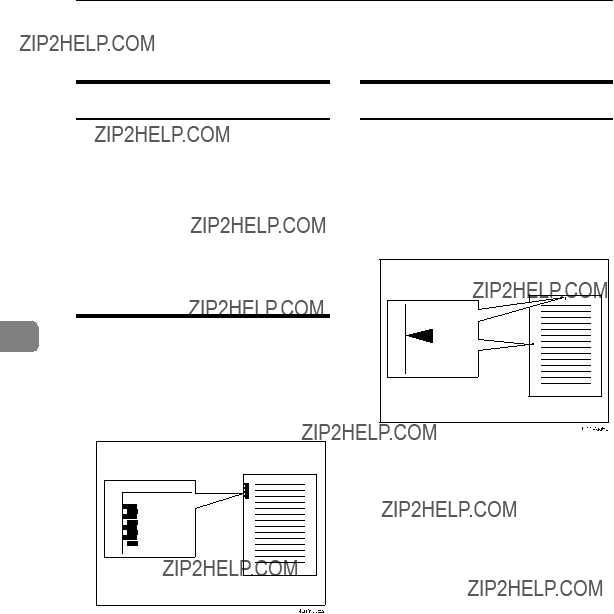

 Note
Note
 Note
Note
 Note
Note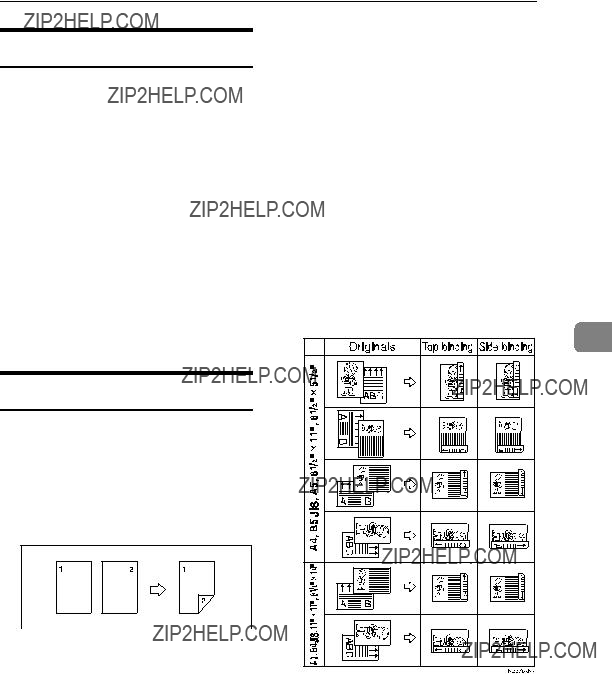

 Note
Note Limitation
Limitation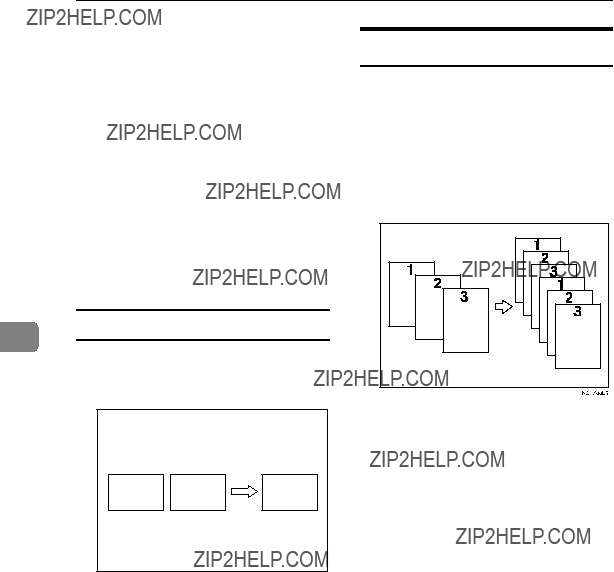

 Note
Note
 Note
Note

 Note
Note Limitation
Limitation
 Note
Note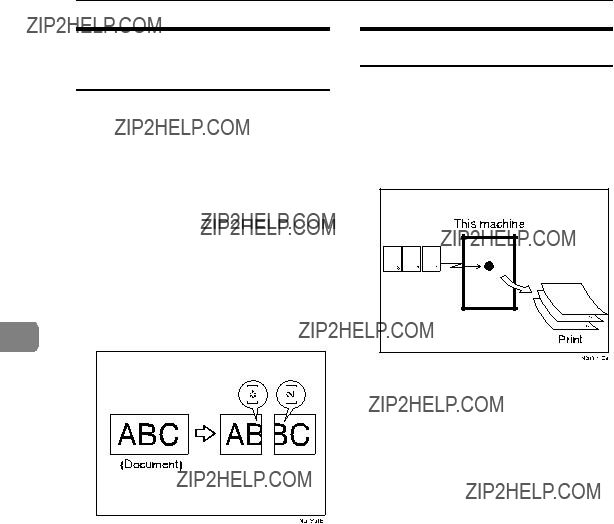

 Note
Note
 Note
Note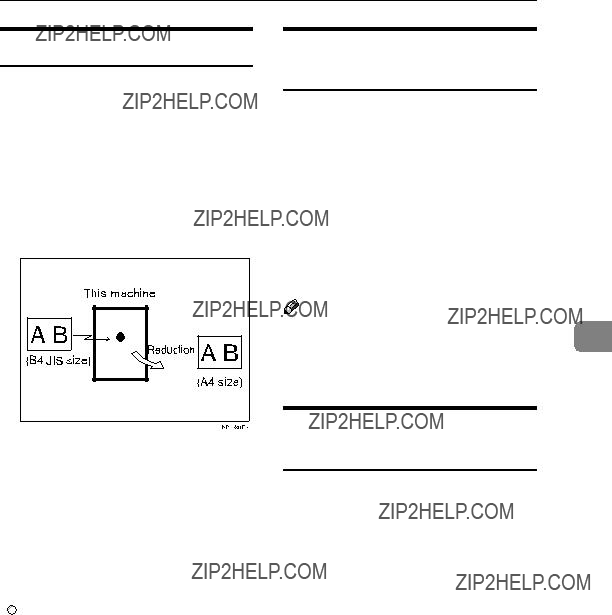

 Note
Note
 Reference
Reference

 Note
Note
 Reference
Reference
 Limitation
Limitation
 Note
Note
 Note
Note
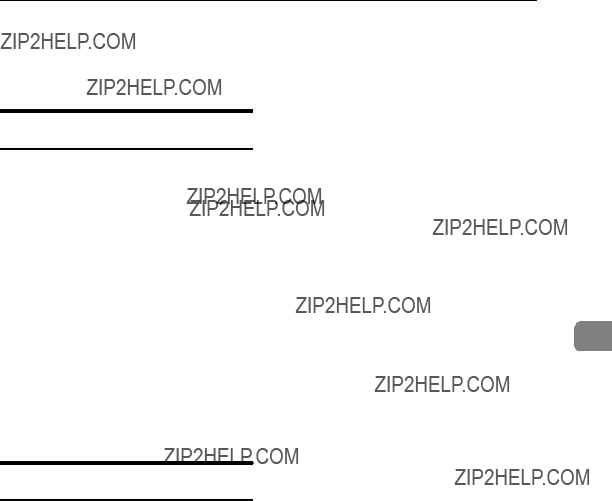

 Note
Note
 Note
Note